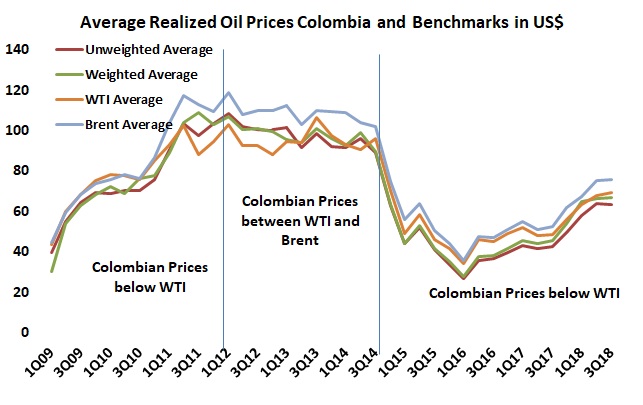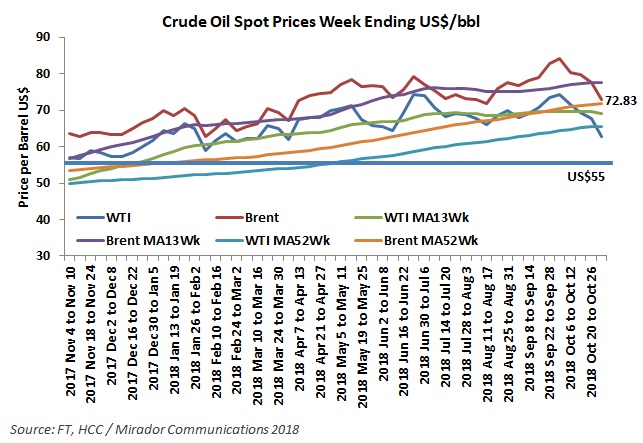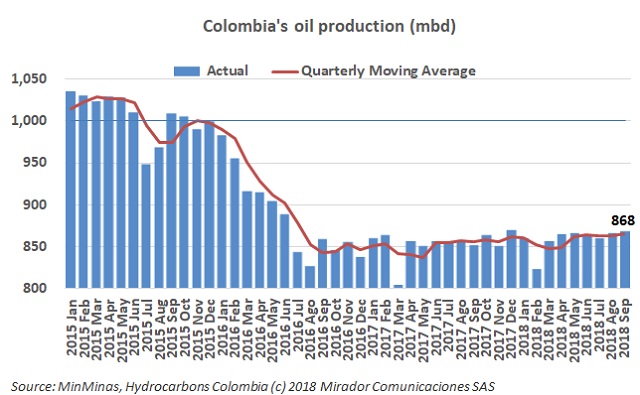
The results for Colombia-focused companies are published, so we updated our statistics on oil prices and netbacks. It was not a great quarter but not a bad one either. As always, individual results may vary; we are looking at Colombian averages.
The recent First Oil and Gas Summit was an opportunity to answer two important questions: how is the industry doing and are the government and the industry on the same page?

Last week’s article updating our oil price and future’s charts gave the Analyst an inspiration. Unfortunately, the ‘muse’ appeared just when he was already up against the deadline so it had to wait for this week.
The Minister of Mines and Energy (MinMinas) announced that 10 experts will define the future of fracking in Colombia. We looked at who was appointed, what might be known about their pre-conceptions and what the implications might be.

We usually update our oil price graphs at the beginning of October but we had other things we thought were more timely. However, by publishing at the end of the month, we captured the slide that has taken place. Trick or treat? Boo!
The government policy topic of the quarter for oil producing countries is economic diversification. The IEA says they cannot count on oil revenues and so need to find new sources relatively quickly. Colombia is not an ‘oil country’ but the same debate runs here.
A decision by the Constitutional Court on Mansarovar Energy’s action for the protection of its constitutional rights (“tutela”) had been widely anticipated. The hope was that it would clarify the issue of whether municipalities can block extractive industry activities. We now have the decision, but questions still remain on the practical implications of the ruling. The situation has been muddied by a State Council decision reaffirming the obligation of local governments to ask their citizens what they think about major issues. We asked Inés-Elvira Vesga and Leopoldo Olavarría of Norton Rose Fulbright for their interpretation of these apparently contradictory decisions. Below are their views:

We recently published the MinMinas estimate of September crude oil production and while the press release (and our story) focused on the (slight) increase month-over-month and year-over-year, the interesting angle is the surprising stability dating from 3Q16 – spanning three years.
Oil prices slipped slightly this week on continued fear of a global economic slowdown but Colombia’s policy makers cannot seem to decide if this is a good thing or a bad thing. I would have thought this was a straightforward question with a straightforward answer.